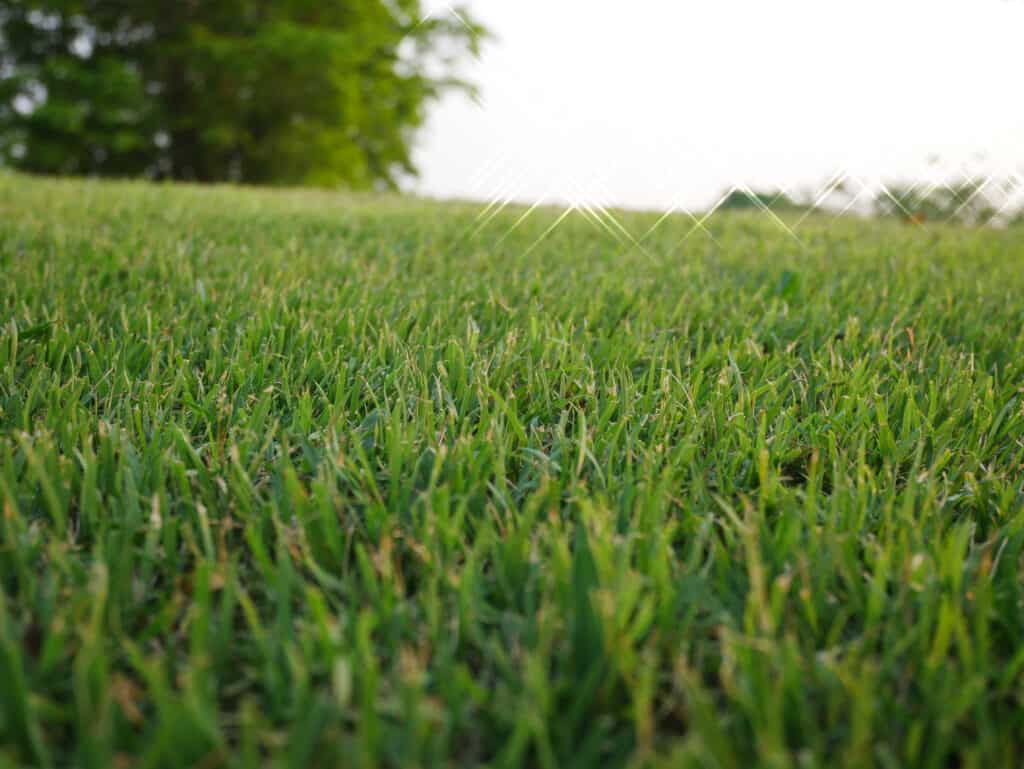If you’ve been thinking about overhauling the appearance of your lawn, you might be exploring different types of grass suitable for the job. Bermuda grass is one of the most popular among them, and many people praise it for a variety of different reasons. Allow this article to serve as a guide to Bermuda grass in Oklahoma. Let’s discuss the different types of Bermuda grass, how to plant and care for it properly, and explore the pros and cons of choosing this grass type over others.
Bermuda Grass: A Brief Introduction

Bermuda grass is nicknamed “couch grass,” in certain places in the world.
©pyzata/Shutterstock.com
There are several different types of Bermuda grass, some of which are common, celebration, princess, hybrid, and tiftuf. Each one of these has different characteristics that will suit some lawns more than others. For example, celebration Bermuda grass performs well in dry conditions. This makes it ideal for homeowners who live in areas that experience periods of drought. Common Bermuda grass is hardy, quick-growing, and strong. It can tolerate more foot traffic than other types. This makes it a good choice for families who spend a great deal of time in their yard with young children. Princess Bermuda grass performs well in shade compared to other varieties. Surprisingly, it can maintain its good looks without as much sun.
Choosing the right type of Bermuda grass for your lawn can feel confusing and overwhelming at first. Some factors to take into consideration when choosing what type is best for you are the average foot traffic on your lawn, the local weather, your budget, and the amount of upkeep you’re willing to do. Bermuda grass is not only popular for use in backyards and lawns, but in commercial areas as well. It has gained popularity for use on golf courses and other sports fields as well as public recreation areas.
How To Plant and Care for Bermuda Grass

Sodding your lawn will inevitably be more expensive than seeding it. However, it will likely be a more stress-free process.
©MarinaDphotography/Shutterstock.com
Although this process may come with some challenges, seeding Bermuda grass is possible even for inexperienced individuals. If you already have an established lawn, the first step in this process is to till it. After this, you can install a sprinkler system if you plan on doing so and deal with any remaining weeds. Be sure to fertilize the remaining dirt in your yard and water it well before seeding your lawn. The best time of year to do this is when temperatures warm up in Oklahoma. Ideally, you’ll want to start this project in the late spring or early summer. After planting, be sure to monitor the grass closely and water it frequently to ensure it establishes itself. Another option is to plant Bermuda sod, although this might be more expensive.
Although planting Bermuda grass on your own is simple and cost-effective, you can always hire professionals to do the job as well. This will cost more, so it is recommended to carve out some time during the spring before temperatures rise to save money. The average yard size in America is approximately 10,000 square feet, and the average cost for Bermuda grass sod is $0.30 to $0.80 per square foot. That being said, the average homeowner can expect to pay about $6,000 to completely sod their lawn. Seeding is much more affordable and will only cost homeowners a few hundred dollars.
Pros and Cons of Planting Bermuda Grass

Bermuda grass loves full-sun environments.
©Joyjiraporn/Shutterstock.com
Many people in Oklahoma love their Bermuda grass lawns. Two of the biggest reasons that this grass has become so popular are its incredible drought tolerance and winter hardiness. In addition, this grass is quite affordable. It is a great option for individuals who want a uniform, aesthetically pleasing lawn without spending a small fortune on it. In addition, this grass is somewhat easy to care for. According to Oklahoma State University, “The coarser-textured, lower density, common-type cultivars are better suited for home lawns because they require lower amounts of maintenance (fertilizing, mowing, and dethatching).”
Despite all its good qualities, there are some drawbacks to Bermuda grass that are important to be aware of. For example, Bermuda grass is more susceptible to weeds than St. Augustine grass. In addition, if you live in a part of Oklahoma that tends to get cold, Bermuda grass may begin to brown and fade. Because of this, individuals living in Southern Oklahoma may benefit from planting this grass over others. Finally, Bermuda grass grows aggressively. If you have other plants or gardens in the yard, you may want to install brick borders to prevent this grass from taking over.
Final Thoughts
Bermuda grass has a wealth of excellent qualities that have made it popular in Oklahoma. Whether or not this grass is right for you will depend on a few factors, the most important of which are your budget and your location. If you do decide to settle on Bermuda grass, take some additional time to think about which variant would suit your lawn best.
The photo featured at the top of this post is © Joyjiraporn/Shutterstock.com
Thank you for reading! Have some feedback for us? Contact the AZ Animals editorial team.







